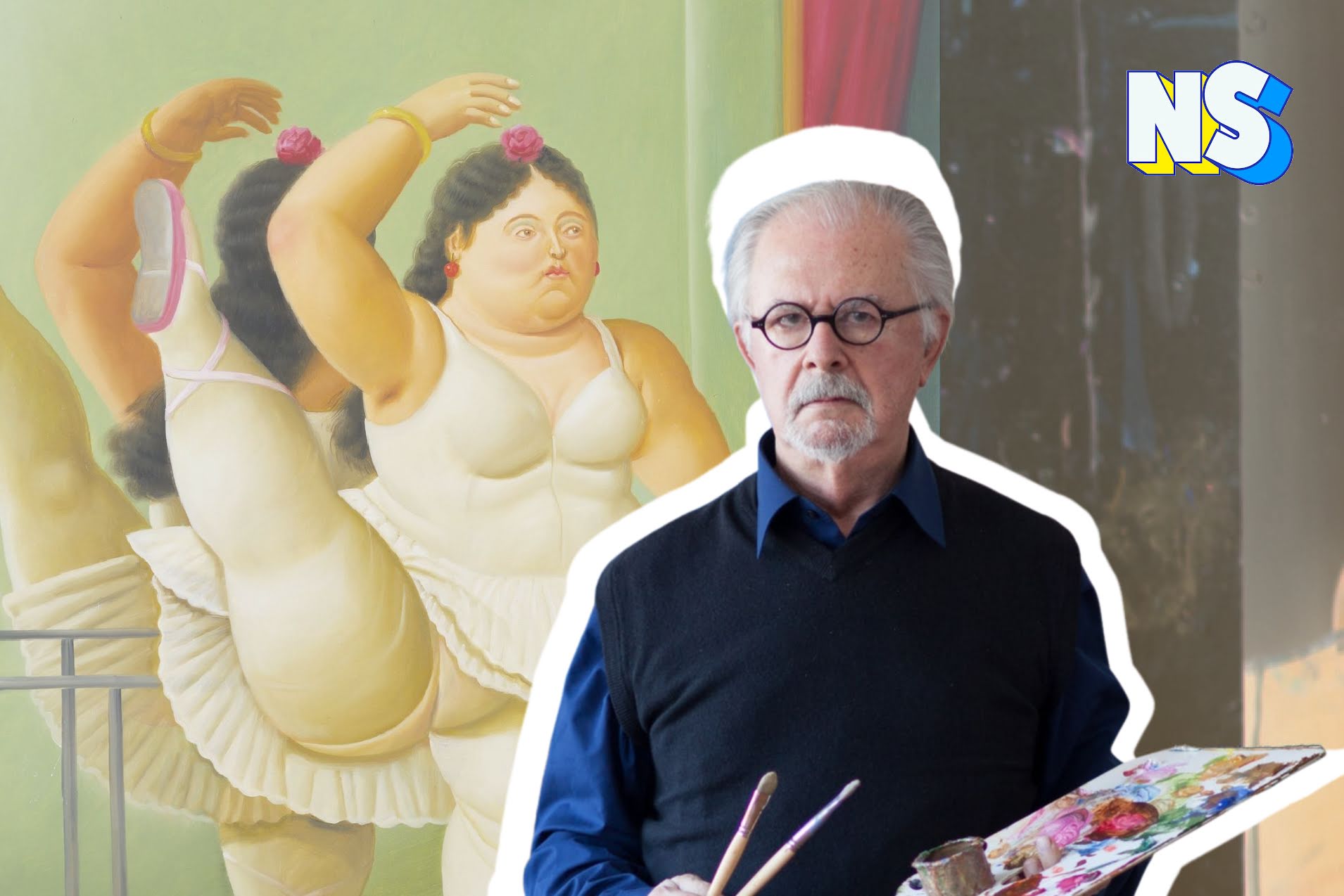Image courtesy of Nuestro Stories.
"Bailarina en la Barra" is one of the most famous images of Colombian painter and sculptor Fernando Botero. His signature style, "Boterismo," illustrates people and figures in large, voluptuous volumes, which the artist uses as political criticism or humor, depending on the piece.
Botero, el Maestro, has been painting for over 60 years and is an iconic fundamental figure of the 20th Century, exalting form, volume, and harmony of color.
He believes art is spiritual and should serve to rest from the difficulties of daily life. The subject matter of his work ranges from scenes of Colombian everyday life to art historical references and abuses of power - all portrayed in his massively rotund figures.
One of his most famous images is "Bailarina en la Barra," painted in Paris in 2000. In an interview, Botero explains how the painting came to be.
“As is customary in my work process, it was born from a tiny sketch that I came up with while I was working on another piece,” Botero said.
“I drew on the canvass with a brush the basic traces of the sketch and started to paint without knowing what colors the work would have nor what would be its complete composition,” he said.
From bullfighter to painter, the career of Fernando Botero
Born in Medellin in 1932, Botero grew up surrounded by Spanish colonial architecture and pre-Colombian artifacts — shapes you can define in his works. He trained as a matador (bullfighters and bullfights feature prominently in his work) but left it after two years to pursue art. He studied the greats — like Fransisco de Goya and Diego Velazquez.
Botero painted many pieces of people dancing. For example, in "Bailarina en la Barra," he painted a ballet dancer posing with one leg and arm in a vertical position on the ballet barre.
The painting is probably a commentary on society’s expectation for women to be thin, especially in an art form like a dance. However, Botero’s ballet dancer appears confidant and aloof, as if she doesn’t care what people think or the beauty standard.
The painting forces the viewer to look at beauty differently, to take in the Rubenesque form of the dancer, her long black hair and the flower that adorns it, and her expression — which invites the observer to admire and not judge.
I found a fascinating quote by Fernando Botero, the most important artist alive, that explains his "Bailarina en la Barra" to a degree.
“All my life, my girlfriends are always skinny. Beauty in art has nothing to do with beauty in reality. Why do you like primitive art? Because there is beauty in the deformity. Sometimes paintings that people consider realistic are not at all. Raphael's figures look realistic, but in real life, they were deformed,” he said.
The ballet dancer on the barre is a thing of beauty, a celebration of the feminine, and the simple act of dancing as if no one sees you.
https://draft.nuestrostories.com//wp-content/uploads/2022/06/Susanne-182x250.jpeg





